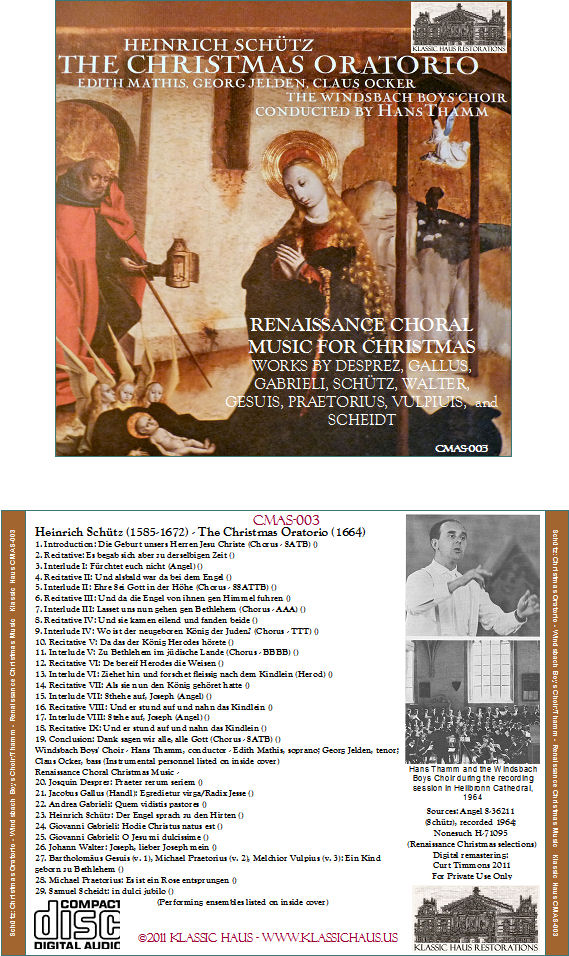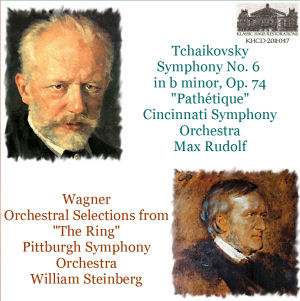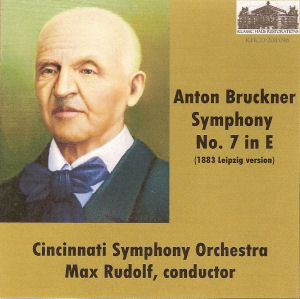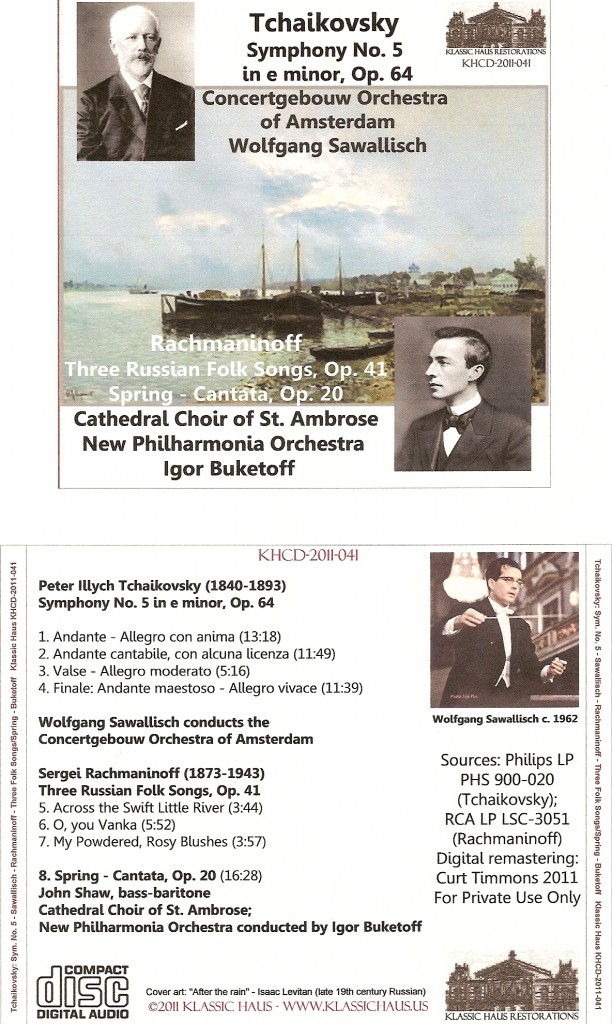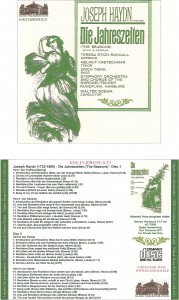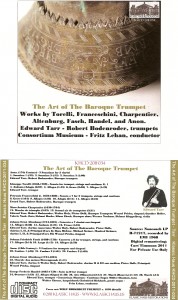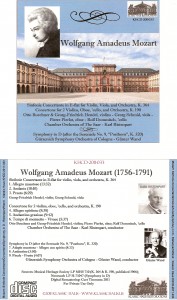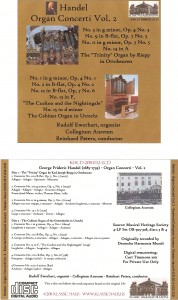Friday, July 1st, 2011
CMAS-003 (STEREO) – Schütz: The Christmas Oratorio (1664) – Edith Mathis, Angel; Georg Jelden, Evangelist; Claus Ocker, Herod; Windsbach Boys’ Choir/Hans Thamm – Renaissance Choral Christmas Music: Selections by Desprez, Gallus (Handl), Andrea & Giovanni Gabrieli, Schütz, Walter, Gesius, Praetorius, Vulpius, and Scheidt – The Christmas Oratorio of Heinrich Schütz was composed in 1664, when he was nearing 80 years old, and gradual deafness was driving him towards reclusion and spiritual introspection. It constitutes a perfect example of his mature genius, with its quasi-plainsong recitatives and its Baroque concerted numbers. It is performed with original instruments, and sung with perfection by the Windsbach Boys’ Choir, and a trio of wonderful soloists, derived from an red leatherette-spine album, blue-label domestic Angel LP. The balance of the disc features three European choral groups performing familiar and not so familiar Renaissance choral works, taken from an early pressing Nonesuch LP from 1966.
This was a “labor of love” disc; the Schütz had some unique tracking problems (skips, the bane of LPs and collectors) that I couldn’t solve when I first started working on it last year. I couldn’t release it for Christmas last year, and had to set it aside for other projects. I came back to it in early June this year, and with some judicious tracking adjustments with my Ortofon Super 10 cartridge along the way, I was able to record without skipping. The results may be heard on the CMAS-003-sample. I hope you enjoy it. The disc may be found at Klassic Haus Restorations, under the Choral/Vocal tab.
Keep checking back; many more titles in the works for July 2011! – Cheers – Curt Timmons
